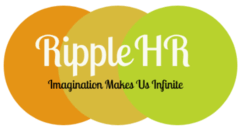What is diversity and inclusion at workplace, and why is it needed?
The conversation about diversity and inclusion at workplace has arrested much attention in the last decade. The idea of an inclusive workplace culture is that people with all kinds of differences and disabilities feel welcome and appreciated.
Diversity in the workplace means that hiring procedures are free from prejudices related to race, caste, gender, or sexual orientation. This not only ensures fair treatment but also triggers equal employment opportunities for all. An inclusive culture values the differences of individuals and encourages participation.
It is no wonder that the onset of the digital age has turned the world into a global village. It has subsequently, embraced differences among people the need to promote cultural diversity and inclusion at workplace. And rightly so, because:
a diverse workforce is a strong workforce.
A diverse workforce is likely to be more innovative and efficient. When people from different cultural and socio-economic backgrounds work together, it results in more innovation and better overall performance. So, it’s a win-win for both the employees and the management.
5 Ways to Create an Inclusive Workplace:
Including inclusivity in the company’s core values is only one of the ways to build an inclusive workplace. The other strategies that can help create a diverse workplace include:
1. Training The Leaders Diversity and Inclusion at workplace
Establishing a diverse and inclusive culture at the workplace can be a challenge if the leaders and senior employees do not prioritize it.
Training the leaders to understand the importance of diversity and inclusivity is a crucial and effective strategy.
Create safe spaces for them to ask awkward questions about inclusivity and its importance in the workplace. Then they can address the employees about the same and help develop practices that foster inclusive behaviour.
2. Establish a Feedback Culture
Start a feedback tradition in the workplace (if you don’t already have one).
The best way to know if your employees feel safe and welcomed at the office is by taking regular feedback. Even just the practice of taking feedback and suggestions will go a long way in making your employees feel accepted and appreciated. In short, implementation of their feedback will boost their morale and even result in better performances.
3. Create a safe space for the Introverts
It’s no secret that workplace culture prefers extroversion. Employees who take charge of projects and speak up in meetings are more likely to be recognized and rewarded. However, this can be unfair to highly skilled introverts who prefer to do tasks quietly. Some employees may be grieving the loss of a loved one or recovering from a sickness. They may not feel up to participating verbally in meetings and could use all the space they can get.
Hence, creating an introvert-friendly model for meetings and projects can work wonders for the introverted, grieving, and recovering workforce. In order to do this, include them and their ideas without putting them on the spot. Allow them to share their views in writing through suggestion boxes.
4. Use preferred pronouns Diversity and Inclusion at workplace
It’s a new world, one that celebrates differences of all kinds. And, a new world calls for equal and fair treatment of all regardless of their gender and sexual orientation. So, it seems only natural for offices to start using preferred pronouns in slack names, email signatures, org charts, etc.
Using preferred pronouns for employees creates awareness and is welcoming to genderqueer & non-binary people in the workforce.
5. Make your office wheelchair accessible
Wheelchair accessibility in an office for employees and visitors is essential. But it should not be restricted to the entrance. Common areas like canteen and washrooms should also be accessible by a wheelchair.
To summarize, Diversity and inclusivity are the two key terms in conversations around equal employment opportunities. In the 21st century, humans may not have invented flying cars, but they have achieved something far more essential: accepting each other’s differences. Given the injustices faced in the previous century by people of a particular religion, or sexual orientation, we can say that we have come a long way. In this short time we have embraced diversity and welcomed differences. Social media has also contributed massively to narrowing the divide between the people. It is evident that engaging in dialogue about differences results in a new culture that accepts and embraces diversity.
Creating a diverse workplace requires that the management undertake measures to educate employees about the importance of inclusivity. The strategies to build a diverse workplace mentioned above are impeccable approaches in the right direction.




